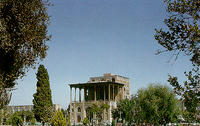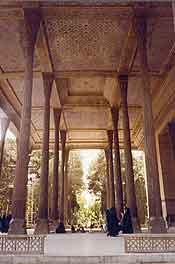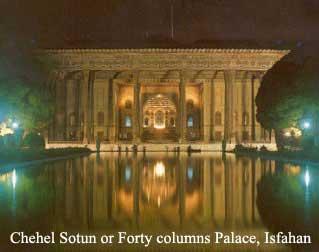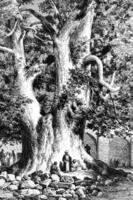Latest Pictures From Sari, Mazandaran, Iran
 A Photo Essay:
A Photo Essay: Chenars of Sari
Here in this webpage we already had articles about old Chenars and references to old chenars in the city of Sari:
"In fact many recorded old planes (Chenars) are located near the shrine of an Emam-zadeh, at or near a masque, a Takieh, an old cemetery, or similar “sacred” places.
For instance the 220 years old (20m high) plane at Emamzadeh Abbas and 140 years old (20m high) plane at Pir Takieh in Sari, northern province of Mazandaran. ..."
http://chenarestan.blogspot.com/2005/08/home-of-oriental-plane-tree-part-iii.html

 My dear old friend Reza Tahmasbi, architect and planner, visited Iran last month and sent pictures from Chenars in the city of Sari, his hometown.
My dear old friend Reza Tahmasbi, architect and planner, visited Iran last month and sent pictures from Chenars in the city of Sari, his hometown.The pictures above and on the left are from Emamzadeh Abbas Chenar.
Unfortunately, he couldn't see the Pir-Takieh Chenar. Apparently it doesn't exist anymore.

Left: Picture of old Chenar in Chal-e Masjed
neigbourhood, downtownSari.

Left:
Khayyam Ave.
Sari

Left:
Farhang Ave.
Sari
 A new meaningless trend:
A new meaningless trend:Artificial elecrtronic trees..!

How Many "Sari"s do we have?
Before publishing this essay, I searched for the name Sari. I found about 75 names. I could zoom in on the maps for any of locations.
I was surprised when I realized that most of those names refer to places outside Mazandaran provnce. they located in northwestern provinces of Ardebil, western and eastern Azarbayjan and even on the west side of Caspian see in todays Azarbayjan Republic, in Kerman, Khuzestan or Hamedan......
In any pages below there is a list of places, with clicking on each name the map appears and you can zoom in.
http://www.indexmundi.com/zp/ir/55660.htm
http://www.indexmundi.com/zp/ir/55680.htm
http://www.indexmundi.com/zp/ir/55700.htm
http://www.indexmundi.com/zp/ir/55720.htm
http://www.indexmundi.com/zp/ir/55740.htm
For more information on plane tree (chenar) in Iran read the articles "Home of Oriental Plane Tree" --Siamak D. Ahi














